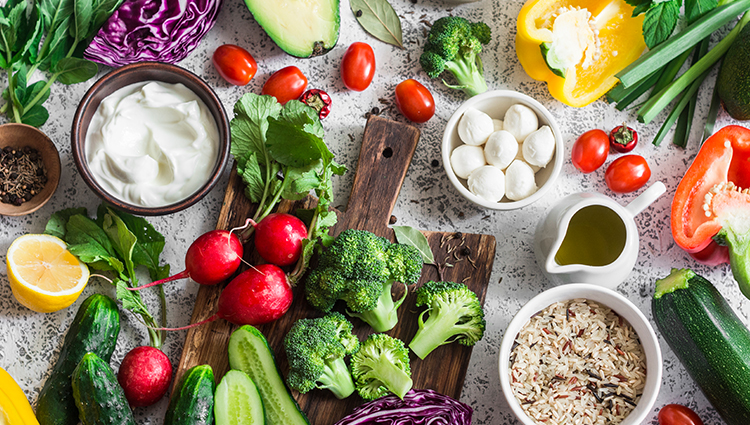While the number of vegetarians and vegans in the U.S. remains relatively small (2% and 0.5%, respectively), research indicates that your patients and clients are more and more interested in pursuing plant-based eating, perhaps because of the positive health halo associated with the term “plant-based.” But what does it mean to follow a plant-based eating pattern?
While the term plant-based has no clear definition, it is often used to define foods largely or solely consisting of vegetables, fruits, nuts, seeds, legumes and/or whole grains, regularly in exclusion of dairy (and other animal-based products). But can dairy be part of a plant-based diet? And how do you talk to your patients about plant-based eating while being inclusive of dairy and other animal-based foods?
Plant-Based Doesn’t Mean Dairy-Free
Plant-based doesn’t mean plant only. In fact, when it comes to healthy eating recommendations, dairy is an essential piece of the plate. Dairy is a core component of all three healthy eating patterns as outlined by the 2020-2025 Dietary Guidelines for Americans (DGA) – including the Healthy US-Style, Vegetarian and Mediterranean-Style eating patterns. All are plant-based (with more than three-fourths of the plate consisting of fruits, vegetables and grains), yet all three eating patterns include dairy, recognizing the important nutrient contributions that dairy foods offer. The DGA reinforces the nutritional value that all food groups provide when eaten in synergy.
The key lies in helping patients and clients opt for one of the science-backed, plant-based dietary patterns highlighted in the guidelines so they can reap the benefits of the variety of nutrients provided by each of the five food groups.
Dairy + Plants = Improved Nutrient Quality
Dairy foods make vital nutrient contributions to plant-based diets. In fact, milk provide thirteen essential nutrients, including high-quality protein and vitamin B12, to complement foods that are not a good source of these key nutrients, such as grains, fruits and vegetables.
Additionally, Americans are falling short on three key food groups – vegetables, fruits and dairy. About 9 in 10 Americans don’t meet their daily vegetable recommendation, 8 in 10 Americans don’t meet their daily fruit recommendation, and about 9 in 10 Americans fall short on the daily dairy recommendation. Pairing plants and dairy can help close these nutrition gaps while providing the dietary components of public health concern – the four key nutrients Americans are often lacking in the diet, including fiber, potassium, calcium and vitamin D.
Dairy Is Not Only Good for People, But Made With Care for the Planet
Often, consumers lean toward a plant-based diet due to concerns about the environmental impact of their food choices. While all food production comes with an environmental footprint, responsible production seeks to minimize that impact through continuous improvement. U.S. dairy farmers are continually striving to produce milk in a more sustainable way. As a result of innovative dairy farming practices, producing one gallon of milk today leaves a 19% smaller carbon footprint and uses 30% less water and 21% less land than it did in 2007. In fact, the U.S. dairy community accounts for only about 2% of total U.S. greenhouse gas emissions.
Dare to Share the Benefits of the Pair
Cheers to the superfood power couple: dairy + plants. A plant-rich, dairy-enhanced diet brings diverse food pairings and recipe options, loads of flavor and texture combos, and so much more. When your clients reach for their favorite dairy foods for that perfect pairing, help them remember that dairy has a role in a plant-based diet – and that milk, cheese and yogurt are not only nutritious, but made with care for the planet too.
Learn more about dairy’s nutrition and sustainability story and find patient education materials. Or share some of our delicious dairy + plant recipes.




